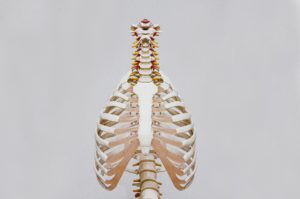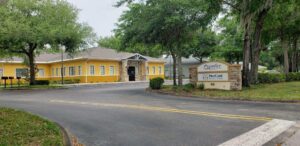To all of our new readers, check out our last article as it is the first in this spine series. As chiropractors, the main goal is to align the spine. We thought it was pretty important to understand the parts and functions, so read further to thoroughly understand your spine.
The spine:
We are going to clearly go through the five major regions of the spine. We have the following regions:
- Cervical
- thoracic
- lumbar
- sacral
- coccygeal regions
The cervical region:
The seven vertebrae located in the neck are in the cervical region of the human spine. To offer sufficient flexibility, the cervical vertebrae are the thinnest and most delicate vertebrae. The first cervical vertebrae is named after the Greek titan, Atlas, who was said to hold the earth on his shoulders.
Doctors refer to this vertebra as C1. When the skull moves up and down, it pivots on the atlas vertebra. The second cervical vertebra is C2.
This one is called axis because it allows the skull to rotate to look left and right. Imagine if we could not do that. These two vertebrae are very important.
The thoracic region:
 There are twelve vertebrae making up the thoracic region of the spine. This portion is in the chest region. These vertebrae are much less flexible than the cervical region.
There are twelve vertebrae making up the thoracic region of the spine. This portion is in the chest region. These vertebrae are much less flexible than the cervical region.
However, they are larger and stronger than the cervical region. The spinous process of the thoracic vertebrae point inferiorly. This helps lock the vertebrae together.
Each thoracic vertebra forms joints which locks in with a pair of ribs to create the ribcage. The ribcage is what protects our incredibly important organs in our chest. You could argue this section is the most important, but they really all are.
The lumbar region:
There are five vertebrae in this region of the spine. This region is found in the lower back area. This may be the most common vertebrae you hear about involved in injuries.
The lumbar vertebrae are even larger and stronger than the thoracic region vertebrae. They are quite something. They are more flexible than the thoracic region as well.
Lumbar vertebrae are more flexible than the thoracic region vertebrae because of the lack of ribs here. All of our body’s weight bears down on the lumbar region vertebrae which is why back problems are most often in this region- despite their strength, flexibility, and size.
The sacral region:
The sacral region is one we all can be experts on because it is only one one and is memorable due to its history. There is only one vertebra in the sacral region of the spine. This region is especially interesting in our opinion as well as the following region. First, let’s discuss the sacral region.
This is the region where as children, our five vertebrae fused together to form this one adult bone in our skeleton. As we mentioned in our least article, this fusion happens in adolescence. This bone is called the sacrum and is flat and triangular. It is found in the lower back, wedged between two hip bones.
The coccygeal region:
 This region of the spine is only comprised of one bone similar to the sacral region. The single bone found in the coccygeal region of the spine is called the coccyx. Similar to the sacral region, there were once multiple bones in this region.
This region of the spine is only comprised of one bone similar to the sacral region. The single bone found in the coccygeal region of the spine is called the coccyx. Similar to the sacral region, there were once multiple bones in this region.
Except in this region, there were four, not five vertebrae. In adolescence, four tiny bones fused together to form the coccyx, the one bone in the coccygeal region of the spine. This bone is nicknamed the tailbone.
In animals that have tails, this is where it would begin. Although we do not have tails, the coccyx bears our weight when we sit down. This is the bone that is often injured or bruised when a person falls on their bum.
The coccyx provides attachment points for muscles of the pelvic and gluteal regions. This bone is interesting as most people have four fused vertebrae, but the coccyx may consist of as little as three or as many as five vertebrae. The number of vertebrae making up the coccyx has no effect on your body’s function.
We hope you enjoyed this breakdown of the human spine’s five regions. This will help you get a better understanding of the spine if you have suffered a spinal injury during a car accident. Our chiropractor and physical therapist will be sure to answer any more of your questions while discussing your injuries and treatment.
Have a great Thanksgiving and be sure to drive safely!
Staff Writer



